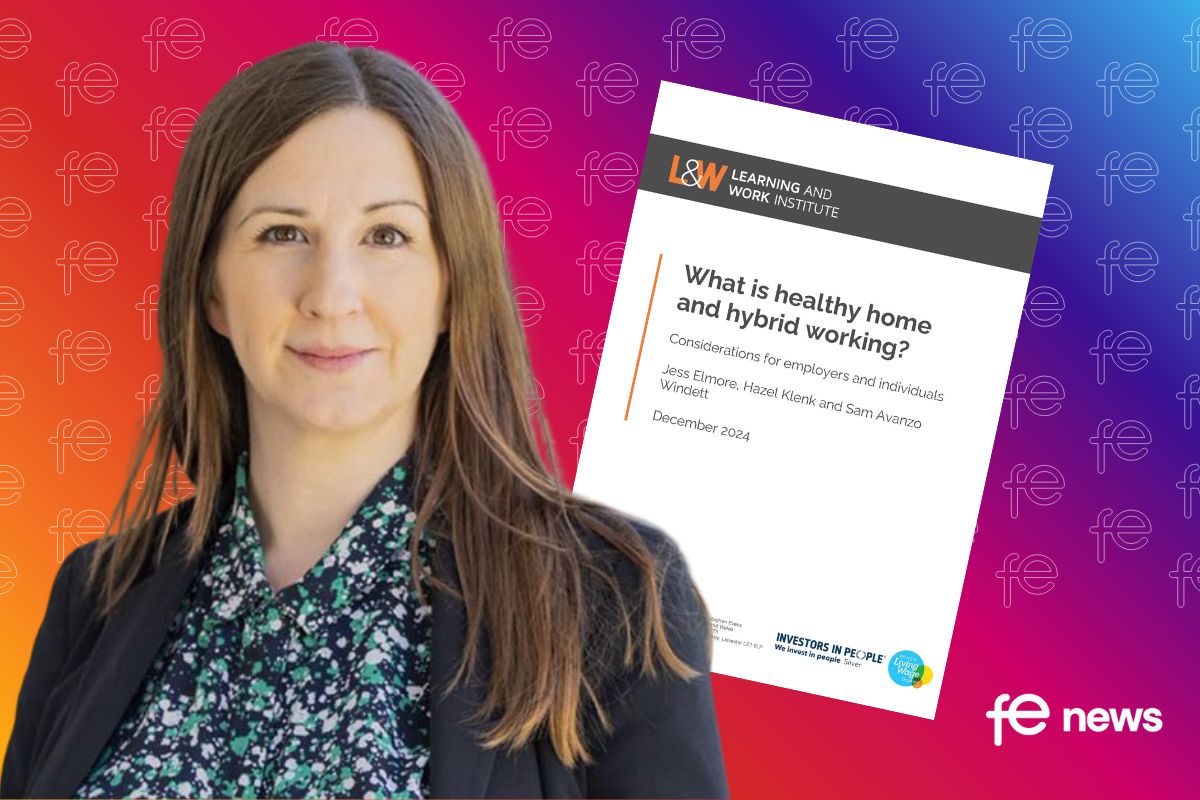The long shadow of deprivation: Differences in opportunities across England

A socially mobile country provides equal opportunities for everyone, across big cities and small towns, and regardless of whether your parents are rich or poor.
While previous work has documented the national picture of social mobility in England, new research published today (15 Sept) by the Social Mobility Commission (SMC) and carried out by researchers from IFS and the UCL Centre for Education Policy and Equalising Opportunities, is able to show – for the first time – how earnings outcomes of children from different backgrounds vary across lower-tier local authorities.
It explores why there are differences in opportunities across place, considering the important role of education and the labour market in creating pockets of poor social mobility.
SMC ask what determines areas of high or low social mobility and explores policy options for any government committed to a levelling up agenda.
Research highlighting England’s local councils with the lowest social mobility opportunities
The effect of deprivation in dozens of English local authorities is now so persistent that some families face being locked into disadvantage for generations unless the right action is taken, a new report shows today.
In the most detailed study of regional social mobility ever conducted in the UK, the report from the Social Mobility Commission identifies local councils with the worst and the best social mobility in England. In the “coldest spots” those from disadvantaged backgrounds, entitled to free school meals, have little chance of making a better life for themselves or their children. They also earn much less than their more affluent peers.
These areas, which range across England, include:
- Chiltern
- Bradford
- Thanet
- Bolton
- Wolverhampton
- Kingston-upon-Hull
- Fenland
- Mansfield
- Walsall
- Gateshead
- Kirklees
- St Helens
- Dudley
- Bolton
- Wigan
Individuals aged 28 from disadvantaged families in these councils earn on average just over half the amount of those from similar backgrounds in the most mobile areas. They also earn much less than those of the same age from more affluent families living nearby.
Areas with high social mobility, where those from poorer backgrounds earn more and the pay gap with those from affluent families is smaller include:
- Forest Heath
- West Oxfordshire
- South Derbyshire
- Cherwell
- Kingston upon Thames
- South Gloucestershire
- Tower Hamlets
- North Hertfordshire
- Eden
The research, carried out by the Institute for Fiscal Studies (IFS) and UCL Centre for Education Policy and Equalising Opportunities (CEPEO), links educational data and HMRC earnings for the first time to identify young sons from disadvantaged families – those entitled to free school meals. The sons who were born between 1986 and 1988 and went to state schools in England, were followed from aged 16 to 28.
The results, covering around 320 local councils in England and 800,000 young adults, show a postcode lottery for disadvantaged people. In areas with high social mobility, disadvantaged young adults earn twice as much as those with similar backgrounds in areas with low social mobility – on average, over £20,000 compared with under £10,000. Annual earnings from this group range from £6,900 (Chiltern) to £24,600 (Uttlesford).
Councils with the lowest earnings for disadvantaged individuals include:
- Bradford
- Hyndburn
- Gateshead
- Thanet
But they also include:
- West Devon
- Sheffield
- Malvern Hills
- Kensington and Chelsea.
Those with the highest earnings include:
- Broxbourne
- East Hertfordshire
- Forest Heath
- Havering
- Uttlesford
- Wokingham
But those from poor backgrounds also face unfairness on their doorstep. Pay gaps between the most and least deprived individuals in local authorities with the poorest social mobility are 2.5 times higher than in areas of high social mobility.
Education, often blamed for social mobility differences, is only part of the answer. In areas with high social mobility, gaps in educational achievement account for almost the entire pay difference between the most and least advantaged sons. On average it accounts for 80% of the difference.
However, in local authorities where social mobility is low it is much harder to escape deprivation. In such areas, up to 33% of the pay gap between the highest and lowest earners is down to non-education factors, like local labour markets and family background.
Disadvantaged workers are restricted by factors including limited social networks (fewer internships); inability to move to more prosperous areas; limited or no financial support from family; less resilience to economic turbulence due to previous crisis such as 2008 financial crash and less developed soft skills.
The commission is now urging regional and community leaders to use the findings to help draw up tailored, sustained, local programmes to boost social mobility, building on the approach in some Opportunity Areas. The commission will also ask the government to extend its current Opportunity Areas programme – which gives support to 12 councils – to include several more authorities identified as the areas with the most entrenched disadvantage.
Key findings
- Social mobility in England is a postcode lottery, with large differences across areas in both the adult pay of disadvantaged adults, and the size of the pay gap for those from deprived families, relative to those from affluent families.
- Disadvantaged young adults in areas with high social mobility can earn twice as much as their counterparts in areas where it is low – over £20,000 compared with under £10,000
- Pay gaps between deprived and affluent young adults in areas with low social mobility are 2.5 times larger than those in areas with high social mobility.
- In areas of low social mobility, up to 33% of the pay gap is driven by family background and local market factors, over and beyond educational achievement.
- Characteristics of the coldest spots: fewer professional and managerial occupations; fewer outstanding schools; higher levels of deprivation and moderate population density.
The Social Mobility Commission is an independent advisory non-departmental public body established under the Life Chances Act 2010 as modified by the Welfare Reform and Work Act 2016. It has a duty to assess progress in improving social mobility in the UK and to promote social mobility in England.
Tables on the best and worst social mobility areas are presented as a separate document. Regional maps and tables are set out at the back of the report.
The research only provides results for men as many women exit the labour market or are working part-time at age 28 because they start to have children and this is related to family background. Estimates for women would therefore not be comparable to men as we cannot adjust for this,
The commission board comprises:
- Sandra Wallace, Interim Co-Chair, Joint Managing Director Europe at DLA Piper
- Steven Cooper, Interim Co-Chair, Chief Executive Officer C.Hoare & Co
- Alastair da Costa, Chair of Capital City College Group
- Farrah Storr, Editor-in-chief, Elle
- Harvey Matthewson, Aviation Activity Officer at Aerobility
- Jessica Oghenegweke, Presenter, BBC Earth Kids
- Jody Walker, Senior Vice President at TJX Europe (TK Maxx and Home Sense in the UK)
- Liz Williams, Chief Executive Officer of Futuredotnow
- Pippa Dunn, Founder of Broody, helping entrepreneurs and start-ups
- Saeed Atcha, Chief Executive Officer of Youth Leads UK
- Sam Friedman, Associate Professor in Sociology at London School of Economics
- Sammy Wright, Vice Principal of Southmoor Academy, Sunderland
Sector Response
 Helen Barnard, Acting Director at the independent Joseph Rowntree Foundation (JRF) said:
Helen Barnard, Acting Director at the independent Joseph Rowntree Foundation (JRF) said:
“It’s simply not right that children’s life chances are so profoundly affected by where they grow up. As a society, we believe every child should have the opportunity to lead a prosperous life, free of poverty, no matter what their background is. But this report shows that in certain areas, children who grow up in poverty are much more likely to stay trapped in poverty during their adult lives.
“In the upcoming Budget and Spending Review, the Government has an opportunity to redesign the systems that are failing children and young people. As this research highlights, a one-size-fits-all approach will not solve this problem. Targeting additional investment to weaker local economies will help to provide the skills and opportunities people need to thrive. Boosting targeted social security support would also have an immediate and significant impact on child poverty.”
 Russell Hobby, CEO of Teach First, said:
Russell Hobby, CEO of Teach First, said:
“Pupils from disadvantaged backgrounds are as smart and ambitious as anyone, but today we have been provided with yet more evidence that many are denied a chance to achieve their potential simply because of where they were born. Without action, we risk trapping these young people in seemingly unbreakable cycles of social mobility and denying them the chance to realise their dreams.
“While it will take a collective effort from all corners of society to tackle this – it’s brilliant schools and teachers that can make the decisive difference in unlocking the potential in all young people. That’s why we need to prioritise investment in schools in low-income areas, so every young person has a chance to thrive.”
Steven Cooper, interim co-chair of the commission said:
“These findings are very challenging. They tell a story of deep unfairness, determined by where you grow up. It is not a story of north versus south or urban versus rural; this is a story of local areas side by side with vastly different outcomes for the disadvantaged sons growing up there.”
Professor Lindsey Macmillan, Director of CEPEO at UCL and Research Fellow at IFS said:
“This new evidence highlights the need for a joined up-approach across government, third sector organisations, and employers. The education system alone cannot tackle this postcode lottery – a strategy that considers the entire life experience, from birth through to adulthood, is crucial to ensuring fairer life chances for all.”
Laura van der Erve, Research Economist at IFS and co-author of the report, said:
“Not only do children from disadvantaged backgrounds have considerably lower school attainment and lower adult earnings than their peers from more affluent backgrounds, we also find large differences in the outcomes of children from disadvantaged backgrounds across the country. This highlights that children’s opportunities in England are still defined by both the family they were born into and the area they grew up in.”
A Government spokesperson said:
“Now more than ever, our focus is on levelling up the opportunities available to every young person in this country and we will do everything possible to make sure no-one is left behind as a result of the impact of the coronavirus pandemic.
“The needs of the most disadvantaged and vulnerable remain central to all our work and we continue to invest heavily to close the attainment gap through initiatives like the £1 billion Covid catch up fund and pupil premium funding, and through investment in childcare and early years education.
“On top of this we are investing £90 million in 12 Opportunity Areas to improve skills and outcomes for thousands of young people in some of the most disadvantaged parts of England, with a focus this year on rolling out initiatives that have worked in other areas to help other places tackle similar challenges.”
“We have provided over £100 million to boost remote education, including devices to the children who need it most
“Pupil Premium funding – worth around £2.4 billion annually – continues to benefit the most disadvantaged pupils
“Our National Careers Service is supporting young people that have been furloughed, made redundant or had their exams cancelled, and our early years funding to councils, worth a planned £3.6 billion in 2020-21, is providing stability for this important sector.
“Over one million children a year are benefitting from our investment in childcare and early years education.
“Early years settings have received significant financial support over the past months and will benefit from a planned £3.6 billion funding package in 2020-21 for free early education and childcare places. We are providing extra stability and reassurance to nurseries and childminders that are open by ‘block-buying’ childcare places for the rest of this year at the level we would have funded before coronavirus – regardless of how many children are attending.
“We are also investing in early years organisations to help them boost disadvantaged children’s development, with grants targeted at improving outcomes for young children at risk of falling behind by age five, and for those with special educational needs.
“The Department for Education is investing £90 million over four years in 12 Opportunity Areas across England to help level up skills and outcomes for children and young people in some of country’s most disadvantaged areas: £72m in its first three years and £18 million for an additional fourth year until August 2021. This includes Blackpool, Derby, Norwich, Oldham, Scarborough, West Somerset, Bradford, Doncaster, Fenland and East Cambridgeshire, Hastings, Ipswich and Stoke-on-Trent.
“As we enter year 4, we’ve set aside £1 million so our dedicated teams can help other places tackle similar challenges to reduce the attainment gap, recruit and train the best teachers, raise school standards and improve outcomes for thousands more young people.
“Low-income families also have access to Universal Credit which can cover up to 85% of childcare costs.
“This Government understands the challenges many are facing which is why we injected £6.5bn into the welfare system, including increasing Universal Credit and Working Tax Credit by up to £1,040 a year, as well as rolling out income protection schemes, mortgage holidays and additional support for renters.
“Our £1 billion Covid catch up package will tackle the impact of lost teaching time as a result of the pandemic, including a £650 million catch up premium to help schools support all pupils and the £350 million National Tutoring Programme for disadvantaged students. The programme is designed to improve the reach of high-quality providers, including by delivering tutoring remotely, to ensure disadvantaged children in all parts of the country can benefit.”











Responses